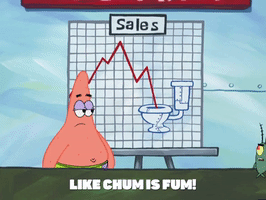
It’s been exactly 78 days since Donald Trump began his second presidency. Even before the dust from his controversial inauguration settled, global markets were thrust into a full-blown trade war, with the US—firing unprecedented tariffs like bullets—right at the eye of the storm.
From massive dips across assets to the unexpected alliance between economic giants Japan, China, and South Korea, traders are feeling the pressure of Washington’s decisions. The volatility is unparalleled, and understanding how to navigate this storm is more critical than ever.
Will there be a recession? What does this mean for US stocks and bonds? Can Bitcoin recover to its peak of $100k?
In this article, we’ll dive into the practical implications of Trump’s tariffs on trading decisions and tackle these pressing questions. Here’s your Trump Tariff Survival Guide—packed with insights and opportunities to help you navigate the ongoing market uncertainty.
Is It a Good Time to Short U.S. Stocks and Bonds?
U.S. Stocks: Market Conditions and Risks
As of April 2025, U.S. stocks have faced a sharp downturn. The S&P 500 is down 21.3%, and the Nasdaq Composite is off 25.6%, which qualifies as a bear market. While this type of decline historically signals a recession, exceptions have occurred, such as in 1962, 1987, and 2022. However, with the VIX (volatility index) surging to levels unseen since the 2008 crash, we see heightened fear and forced liquidation—yet no clear catalyst for a market bottom.
The VIX surged to 60.13 on April 7, closing at 46.93 on April 8, hitting one of its highest levels since the 2008 and 2020 crashes. This spike suggests capitulation-like fear, often seen near market bottoms. Historically, VIX spikes above 50 have preceded strong short-term rebounds — but not always durable ones. In both 2008 and 2020, markets continued falling even after the VIX peaked.

Should Traders Short Stocks Now?
Shorting U.S. stocks might still present downside potential, particularly if recession risks materialise. If economic data worsens or corporate earnings take a hit, further declines could occur. But, with much of the bad news priced in, watching for signs of economic stabilisation or policy changes may signal it’s time to cover short positions. Therefore, timing is crucial, as the current market has already priced in a lot of the negativity.
U.S. Bonds: A Changing Narrative
The narrative around U.S. Treasury bonds has shifted as the 10-year yield has fallen to around 4.0%, its lowest point since October 2024. This drop is attributed to a flight to safety amidst escalating trade tensions and recession fears. The yield curve remains inverted, with short-term yields higher than long-term ones, which is a classic recession indicator.
Should Traders Short Bonds?
Shorting bonds has become a less attractive strategy. As recession concerns rise, bond prices are rising, and yields are likely to fall even further. The environment for bond markets has shifted toward long positions, especially with inflation expectations remaining modest and the possibility of further Fed rate cuts. Shorting bonds carries significant risk, and unless inflation surprises to the upside, a more cautious approach to bonds seems prudent.
Will There Be a Recession?
The risk of a recession in the U.S. is growing, with several key indicators pointing to a potential slowdown.
Key Recession Indicators:
- Yield Curve Inversion: The 3-month T-bill yield has been above the 10-year yield for several months, deepening as the inversion reached -50 basis points. Historically, this has been one of the most reliable recession signals.
- Leading Economic Index (LEI): The LEI fell 0.3% in January 2025, continuing a downward trend that indicates slowing economic momentum.
- Rising Unemployment: The U.S. unemployment rate has risen from 3.5% to 4.1% since 2023, a significant shift that traditionally precedes economic downturns.
Despite these signals, there’s still a possibility for a soft landing, where the economy avoids a full recession. Major investment banks like Goldman Sachs have raised their recession probability to 45%, while J.P. Morgan has pegged it at 60%. The possibility of further trade tensions and tariffs could drive these numbers even higher.

Conclusion on Recession
The indicators suggest increased recession risk, but it’s not a certainty. Traders should remain cautious and monitor economic data closely, particularly as we approach the second quarter of 2025. The likelihood of a mild recession is growing, but timing the market will require a careful balancing act.
Will Bitcoin Ever Recover to $100K?
Bitcoin’s Recent Price Performance
As of April 2025, Bitcoin (BTC) opened at approximately $85,227 before experiencing a 13% decline, reaching a low of $74,496. Bitcoin has shown some recovery, trading around $80,858. These fluctuations come amidst global market volatility, and the correlation between Bitcoin and traditional markets, such as the S&P 500, remains notable.

Fundamentals and Sentiment
Despite the recent dip, Bitcoin’s open interest in futures remains high, indicating continued institutional interest. With the M2 money supply expanding and stablecoin market capitalisation growing, there are reasons to remain cautiously optimistic. The increasing supply of stablecoins suggests that there is more liquidity entering the market, which could support Bitcoin’s price in the long run.
However, Bitcoin’s performance is still influenced by broader macroeconomic factors, such as ongoing trade tensions and shifts in global risk sentiment. In the short term, Bitcoin’s price remains vulnerable to traditional market movements, but in the medium term, the growing stablecoin supply and expansion of M2 could lead to price recovery.
Conclusion on Bitcoin Recovery:
While Bitcoin’s Road to $100k may be bumpy, the increasing liquidity in the crypto market and ongoing macroeconomic developments point to potential recovery in the future. Traders should monitor global economic conditions, including inflation trends and interest rates, as they will likely play a pivotal role in Bitcoin’s price recovery.
Final Thoughts: Navigating Tariffs and Market Volatility
The ongoing trade war tensions and Trump’s tariffs continue to drive high global volatility, impacting everything from stocks and bonds to cryptocurrencies. Whether it’s deciding whether to short U.S. stocks and bonds or keeping an eye on Bitcoin’s recovery, the key takeaway for traders is to stay nimble and informed.
Given the rising recession risk, combined with escalating trade tensions, traders need to be ready for further volatility. Shorting stocks and bonds may still present downside potential, but the environment calls for caution as market conditions evolve.

At VT Markets, we provide the tools and insights you need to navigate market volatility effectively. Trade smarter by staying informed, managing risk, and positioning yourself for long-term success in these uncertain times.
Sign up today and start trading now—make the most of the opportunities that arise, even amidst stormy weather.









